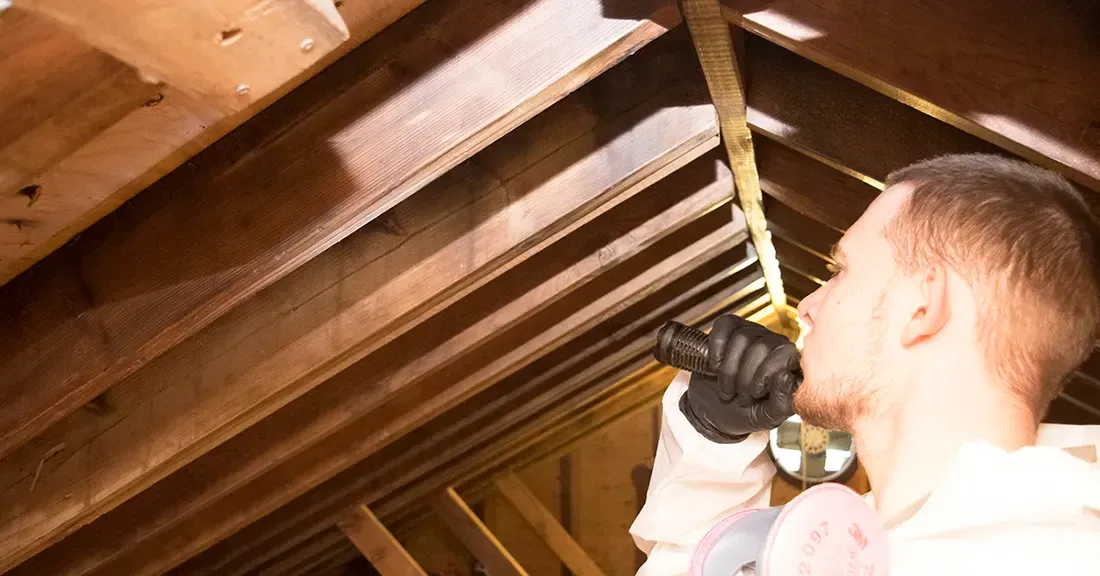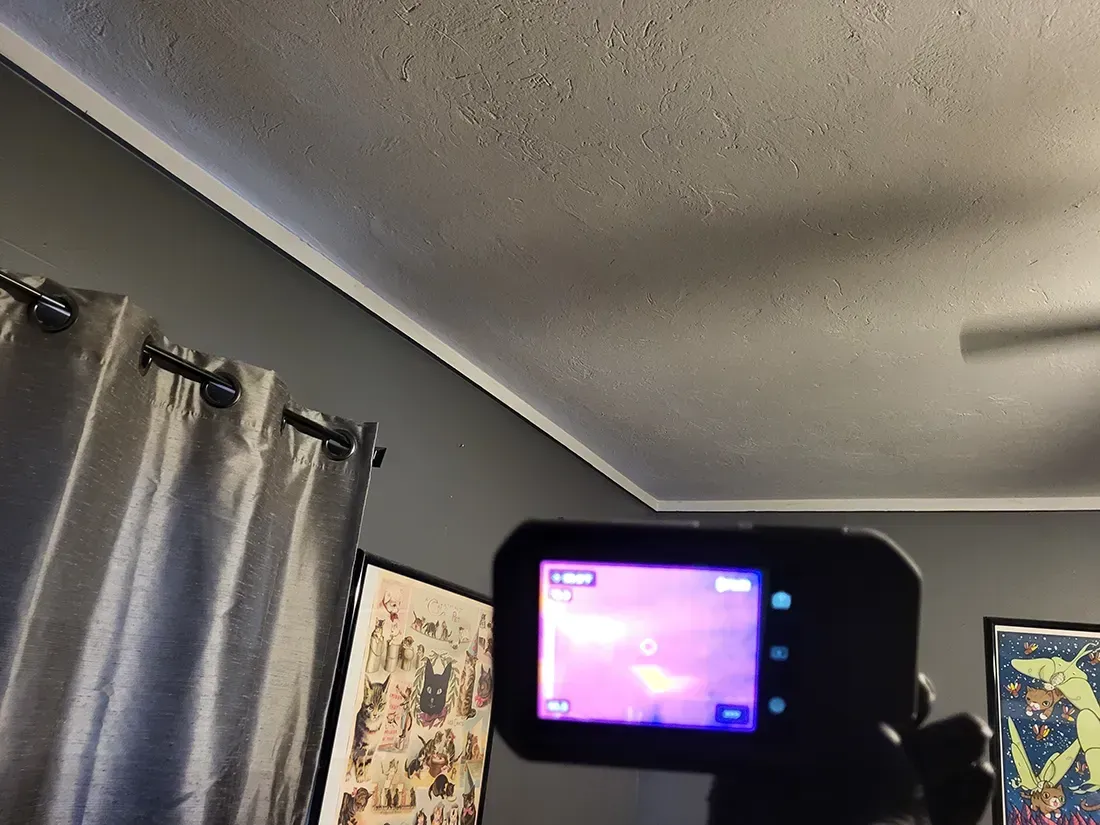General Mold Testing vs. CIRS Biotoxin Mold Testing: Which is Right for Your Myrtle Beach Home?

It starts subtly—maybe you notice persistent musty smells, or your family experiences unexplained fatigue, headaches, or allergy symptoms. You're worried about mold, but what kind of mold testing do you need? Myrtle Beach homeowners often don't realize that mold testing isn't a one-size-fits-all service. The right testing method depends entirely on your specific concerns: whether you're simply worried about hidden mold affecting your home or suspect that your family's chronic health issues could stem from dangerous mold biotoxins.
Choosing correctly matters deeply. General Mold Testing and CIRS Biotoxin Mold Testing differ significantly in their purpose, methods, and implications for your health and home. Understanding this distinction ensures that you choose the test that directly addresses your specific issue, thereby protecting your home, family, and peace of mind.
When General Mold Testing is the Right Choice for Your Home
If you suspect mold but don't have severe health symptoms, your priority might be ensuring your home is structurally sound and the air inside is clean and safe. Perhaps you're concerned about mold behind walls, unusual odors, or potential moisture issues. General Mold Testing specifically addresses these concerns, pinpointing if mold exists, where it is hiding, and how extensively it has spread. Detecting mold early through general testing helps prevent costly repairs and avoid future health issues.
This type of mold testing is most effective when dealing with hidden mold or when your primary concern is the home's structural integrity and general indoor air quality. It provides critical information needed before professional remediation, clearly defining the scope of the mold issue and identifying the moisture sources causing it.
Hidden Mold: Why You Need a Professional Assessment
Homeowners often sense mold before they ever see it. Mold doesn't always reveal itself clearly; it usually grows behind walls, beneath flooring, and above ceilings. If you suspect hidden mold, professional inspectors use specialized tools such as moisture meters, thermal imaging cameras, and particle counters to locate concealed mold precisely. This detailed process reveals otherwise invisible mold, enabling you to address issues before they become costly problems.
Even when mold remains unseen, it still impacts indoor air quality. General Mold Testing includes air sampling analyzed by independent laboratories to determine if mold spores inside your home exceed normal levels. If your family experiences mild respiratory issues or allergies that improve when away from home, testing indoor air quality provides definitive answers, allowing you to restore healthy air promptly.
When CIRS Biotoxin Mold Testing is Essential for Your Health
Unlike general mold concerns, Chronic Inflammatory Response Syndrome (CIRS) presents a more serious health situation. If you or someone in your family suffers from persistent symptoms such as severe fatigue, cognitive difficulties, chronic joint pain, or other unexplained illnesses, standard mold tests are not enough. CIRS Biotoxin Mold Testing is specifically tailored to identify mold toxins linked directly to these health problems, providing critical answers that general mold tests simply cannot.
This specialized testing is crucial if your primary motivation is resolving severe and ongoing health symptoms. It targets biotoxin molds known to trigger chronic inflammatory responses, providing a direct connection between mold in your home and the specific biotoxin exposure causing your symptoms.
Understanding CIRS: Connecting Mold Exposure to Health Symptoms
CIRS isn't simply an allergic reaction—it's a systemic condition triggered by mold biotoxins found in water-damaged buildings. The symptoms are wide-ranging, persistent, and debilitating. Unlike general mold allergies, CIRS symptoms don't resolve until the source of the biotoxins is fully removed. If you suspect that your health issues are from mold biotoxins, specialized CIRS testing accurately pinpoints exposure, allowing for targeted remediation.

The Importance of qPCR Testing (ERMI and HERTSMI)
Specialized CIRS testing includes advanced qPCR methods such as ERMI and HERTSMI. These tests precisely identify and measure mold species known to produce harmful biotoxins. ERMI and HERTSMI testing methods quantify mold species explicitly linked to severe health outcomes. Combined with traditional inspection and sampling techniques, these tests provide your medical professional with the exact data needed to create an effective, personalized treatment plan.
Making the Right Decision for Your Myrtle Beach Home and Family
The decision between General Mold Testing and CIRS Biotoxin Mold Testing hinges entirely on your specific circumstances. Your priority should be clear: general testing is ideal when structural integrity and general air quality are your primary concerns, while CIRS testing specifically targets severe health-related mold concerns. Knowing exactly what you face is critical—choosing the correct test means getting precise answers and solutions that truly matter.
Consider these two real-life Myrtle Beach scenarios to clarify the difference and significance of each:
1. General Mold Testing in Action: One local homeowner noticed persistent musty smells in their home, particularly after storms. No one was seriously ill, but concerns about air quality and potential hidden mold led them to request a General Mold Test. The tests revealed mold behind drywall from a slow plumbing leak. MasterTech quickly remediated the mold, repaired the leak, and prevented further damage and health issues.
2. CIRS Biotoxin Testing in Action: Another Myrtle Beach family faced severe, ongoing health issues—extreme fatigue, debilitating brain fog, and unexplained joint pain. Doctors suspected exposure to mold biotoxins, prompting specialized CIRS testing. MasterTech's inspection identified toxic mold in their home. Coupled with medical intervention, the targeted remediation significantly improved their health, clearly linking their condition directly to the mold biotoxin exposure.
Choose the Right Test and Take Action Today
Ultimately, choosing between General Mold Testing and specialized CIRS Biotoxin Mold Testing depends solely on your concerns and experiences. If your home exhibits signs of hidden mold or your family's health issues align with CIRS symptoms, MasterTech Environmental in Myrtle Beach offers the expert testing and clear guidance you need.
Contact MasterTech Environmental at 843-236-3399 today for professional mold testing tailored to your specific needs—protecting your home's integrity, your family's health, and your peace of mind.



